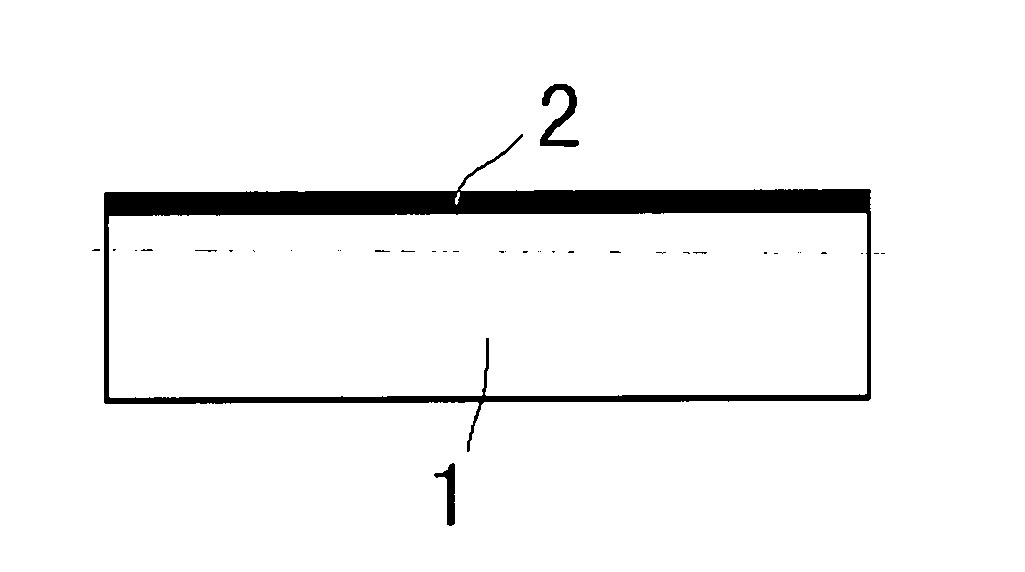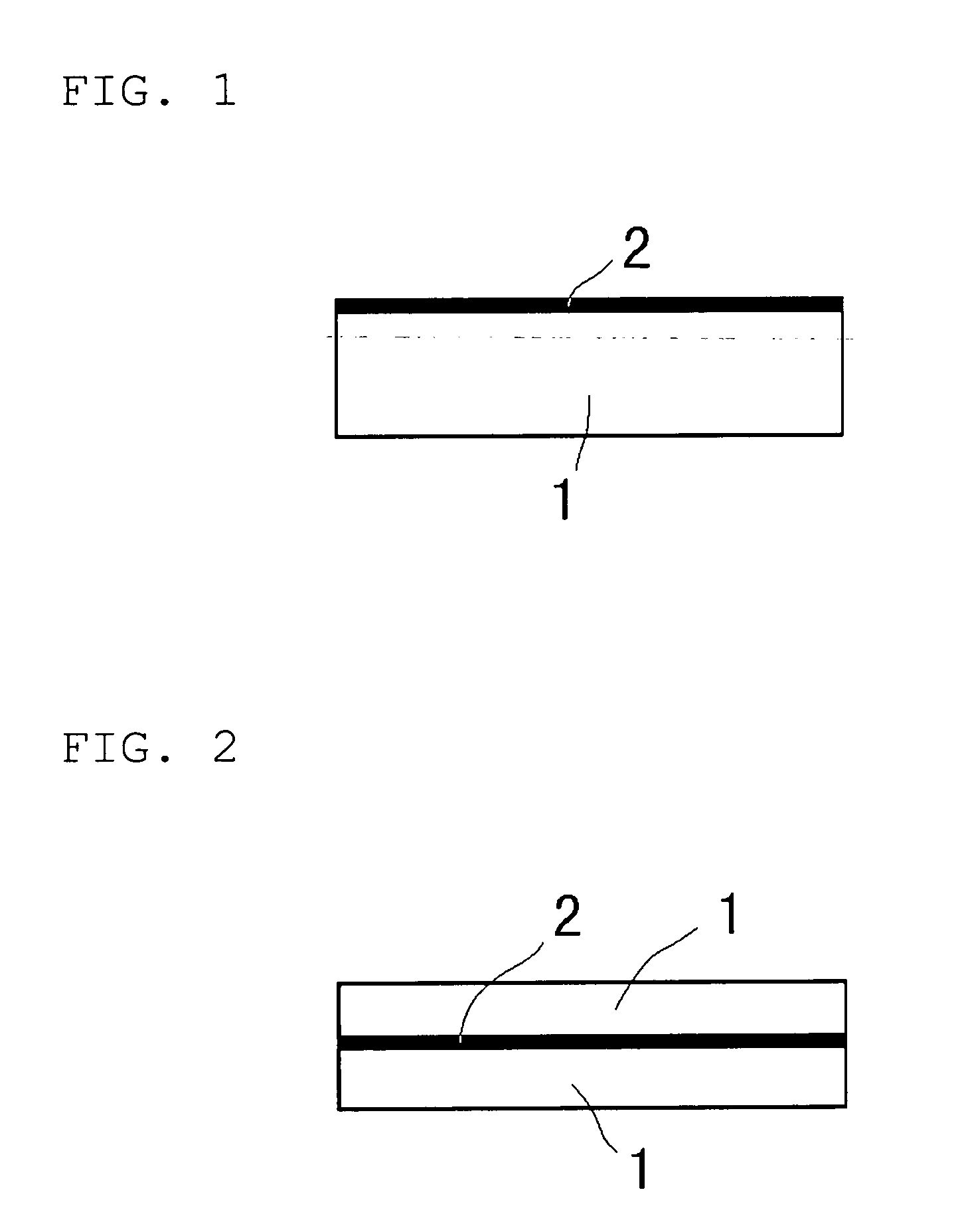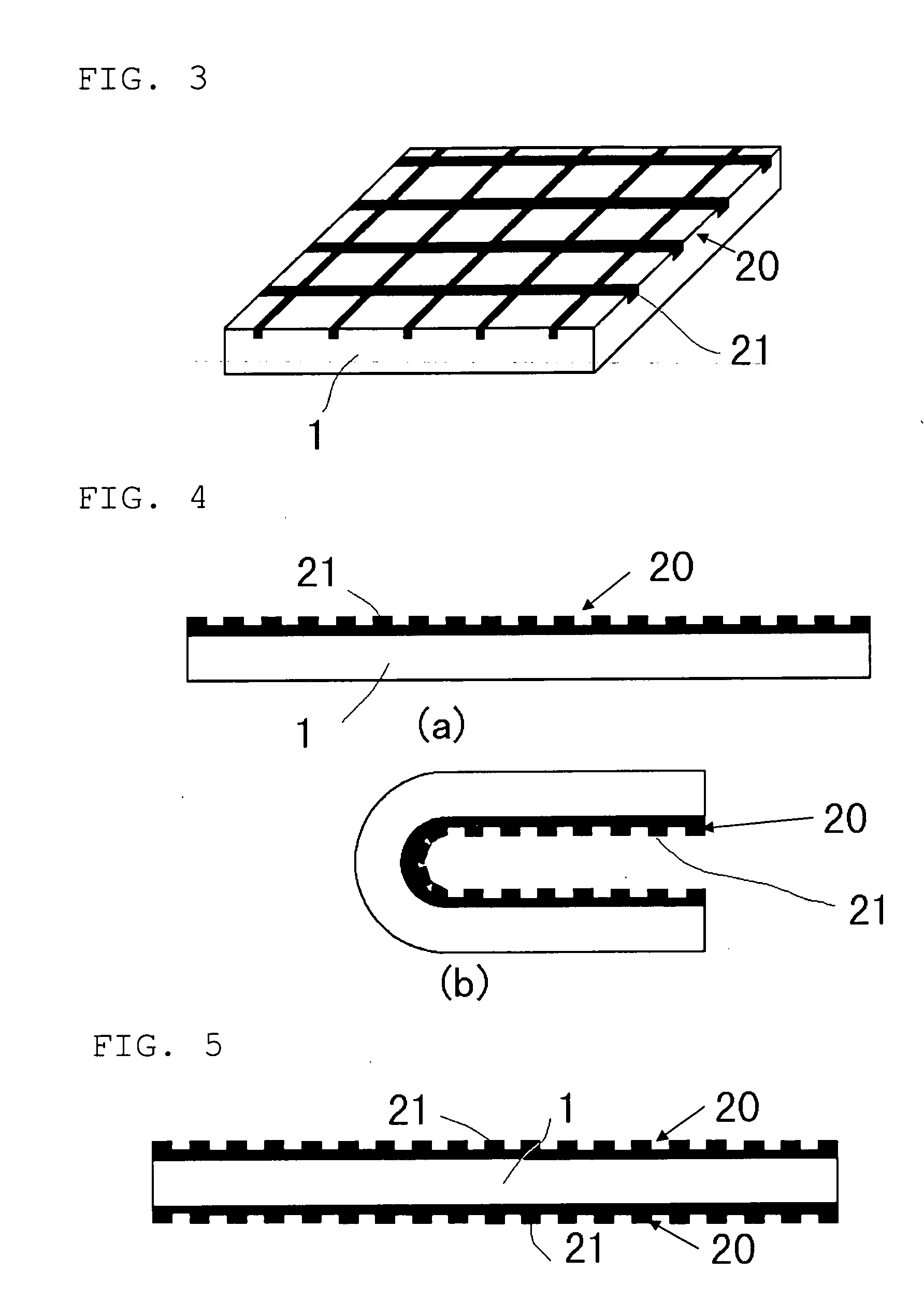Shield material
a shield material and material technology, applied in the field of shield materials, can solve the problems of deterioration of radiation shielding performance, material density reduction, poor availability as shield material, etc., and achieve the effect of enhancing resistance against breakage and cracks
- Summary
- Abstract
- Description
- Claims
- Application Information
AI Technical Summary
Benefits of technology
Problems solved by technology
Method used
Image
Examples
example 1
[0029] Table 1 shows various examples where a shield material of the present invention is applied to a nuclear radiation shield.
[0030] In Table 1, samples Nos. 1 to 8 are Inventive Examples, and samples Nos. 9 to 13 are Comparative Examples. Table 1 also shows evaluation results of flexibility, shielding ability, flame resistance, environmental impact and handling performance of each sample, and a comprehensive evaluation thereof.
[0031] As dispersed particles for providing a nuclear radiation-shielding ability, a tungsten powder, a molybdenum powder and a hafnium oxide each having a particle size of about 0.5 to 100 μm were prepared. Further, as an organic material, an olefin elastomer, a vulcanized rubber, a styrene elastomer, an isoprene elastomer and a polyester elastomer were prepared. Then, each of the organic materials was mixed with each of the dispersed particles at a ratio of about 40 volume %, and the mixture was kneaded to obtain a composite material. The obtained compo...
example 2
[0037] Table 2 shows various examples where a shield material of the present invention is applied to an electromagnetic radiation shield.
[0038] In Table 2, examples Nos. 21 to 23 are Inventive Examples. As an electromagnetic radiation-shielding dispersed material, an iron oxide powder and an iron powder were selected. Further, as an organic material, a vulcanized rubber and an olefin elastomer were selected. Then, each of the organic materials was mixed with each of the dispersed materials at a ratio about 40 volume % to form a composite material, and the composite material was treated in the same manner as that in Example 1 to prepare a plate-shaped member of 1 mm×1000 mm×1000 mm.
[0039] As a cloth-like sheet, a VC-coated glass cloth sheet was selected, and two of the glass cloth sheets are prepared. Then, the plate-shaped sheet made of the composite material was sandwiched between the glass cloth sheets, and the outer periphery of the glass cloth sheets was integrally joined to t...
example 3
[0044] FIGS. 1 to 5 show various examples of a shield material with a reinforcing member of the present invention.
[0045] When a shielding element 1 comprises a mixture of particles having a radiation shielding ability and a flexible polymer compound, it additionally includes a reinforcing member 2 integrally attached thereto. The reinforcing member 2 may be attached to the shielding element 1 in the following manners. As shown in FIG. 1, when the reinforcement member 2 has a film shape or a mesh shape, it may be attached onto one surface of the shielding element 1. Alternatively, as shown in FIG. 2, the reinforcement member 2 may be embedded in the inside of the shielding element 1.
[0046] Further, as shown in FIG. 3, when a reinforcement member 20 has a plurality of protrusions 21 formed on one surface thereof, it may be arranged to allow the protrusions 21 to face downward, and then integrally embedded in the vicinity of one surface of the shielding element 1.
[0047] Further, in ...
PUM
| Property | Measurement | Unit |
|---|---|---|
| particle size | aaaaa | aaaaa |
| temperature | aaaaa | aaaaa |
| thickness | aaaaa | aaaaa |
Abstract
Description
Claims
Application Information
 Login to View More
Login to View More - R&D
- Intellectual Property
- Life Sciences
- Materials
- Tech Scout
- Unparalleled Data Quality
- Higher Quality Content
- 60% Fewer Hallucinations
Browse by: Latest US Patents, China's latest patents, Technical Efficacy Thesaurus, Application Domain, Technology Topic, Popular Technical Reports.
© 2025 PatSnap. All rights reserved.Legal|Privacy policy|Modern Slavery Act Transparency Statement|Sitemap|About US| Contact US: help@patsnap.com



